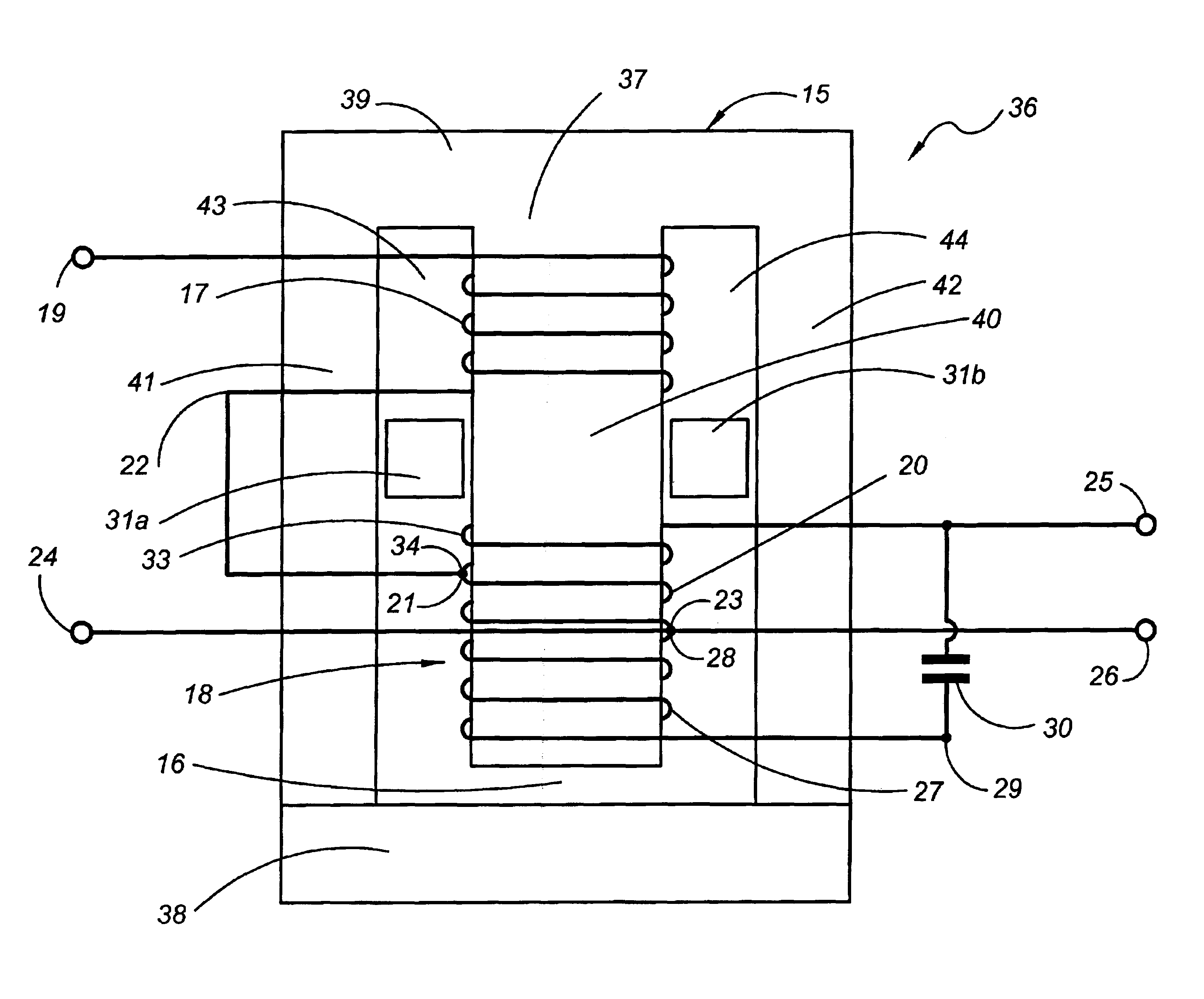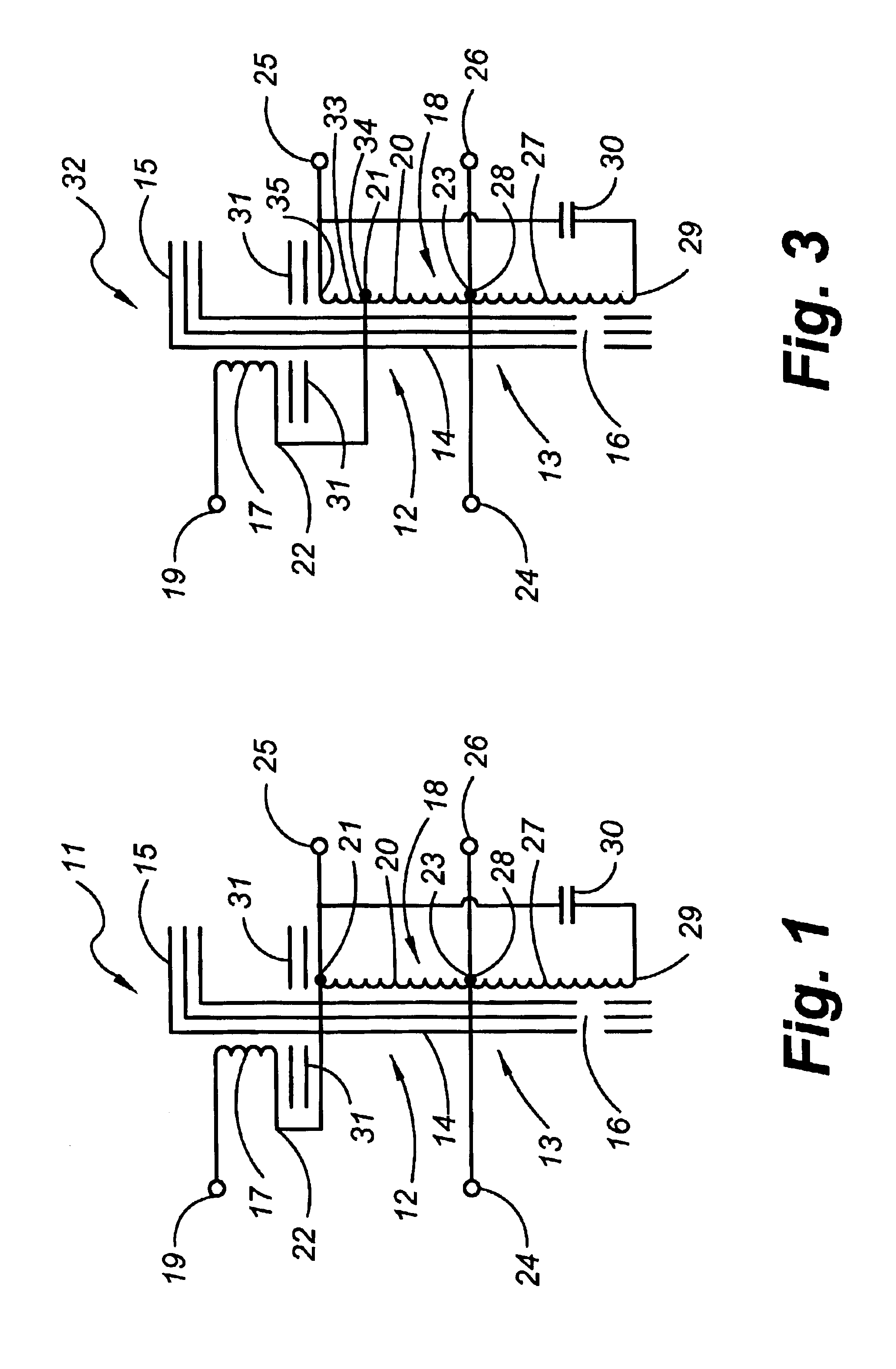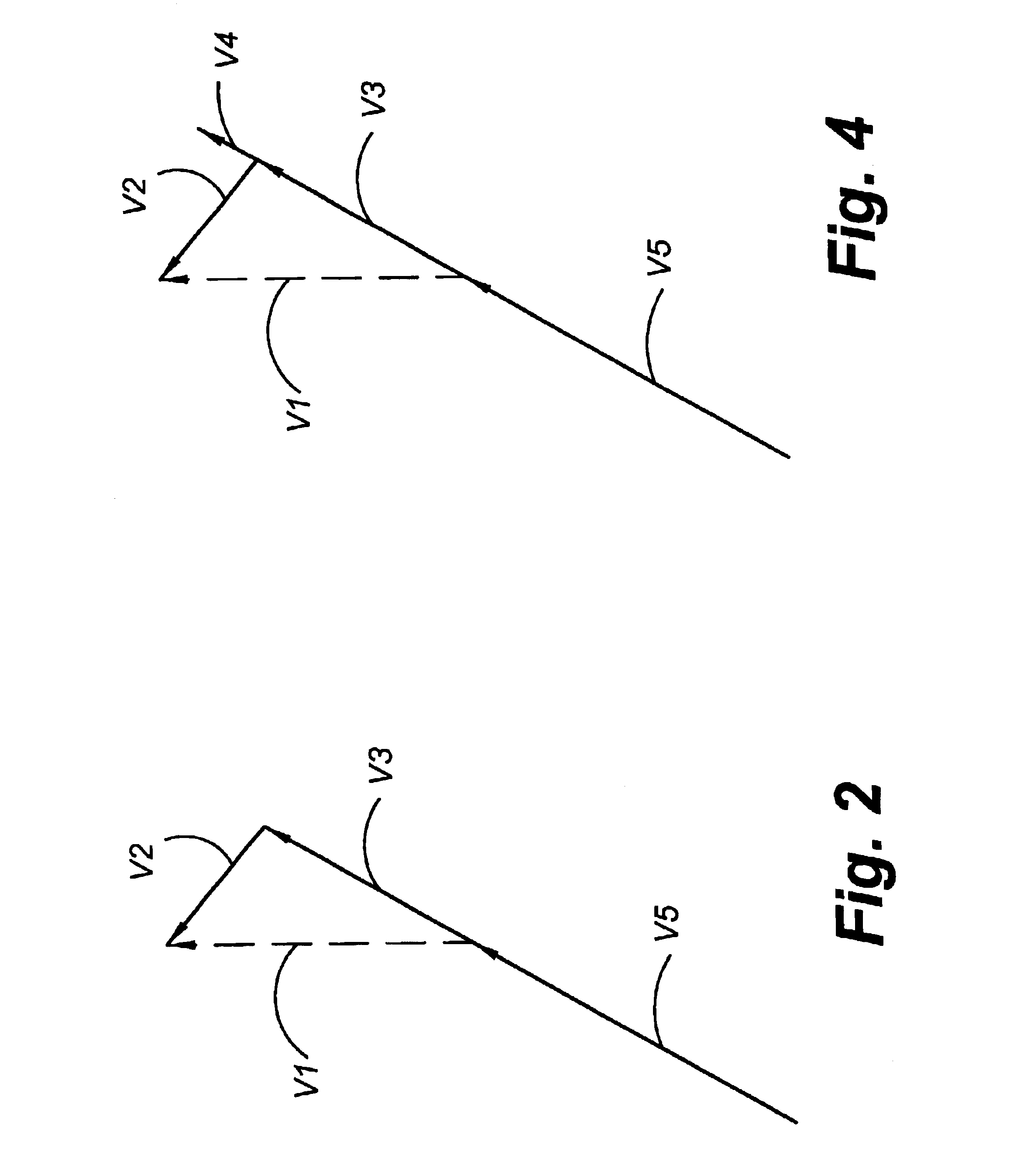Harmonic filtering circuit with special transformer
a filter circuit and transformer technology, applied in the field of filter circuits, can solve the problems of wasting harmonic energy, wasting harmonic energy, and turning into heat, and achieve the effect of simple and inexpensiv
- Summary
- Abstract
- Description
- Claims
- Application Information
AI Technical Summary
Benefits of technology
Problems solved by technology
Method used
Image
Examples
Embodiment Construction
FIG. 1 shows a filter circuit 11 comprising a special autotransformer 12 with a ferromagnetic core 13 that has a plurality of legs and bars that are parts of a low-reluctance flux path and include winding leg means 14 and flux return means 15. The core also has a region of substantially increased reluctance, such as an air gap 16. First and second coils 17 and 18 are in spaced-apart locations of the winding leg means 14, with one terminal 19 of the first coil serving as a first input terminal of the filter circuit. The second coil 18 includes a first winding 20 that has a first terminal 21 connected to a second terminal 22 of the first coil 17 to form a first series circuit from the terminal 19 to a second terminal 23 of the winding 20. The terminal 23 is connected to a second input terminal 24, so that the first coil 17 and the first winding 20 of the second coil 18 form the input circuit of the filter 11.
The connection between the terminals 21 and 22 is connected to a first output...
PUM
| Property | Measurement | Unit |
|---|---|---|
| current | aaaaa | aaaaa |
| current | aaaaa | aaaaa |
| current | aaaaa | aaaaa |
Abstract
Description
Claims
Application Information
 Login to View More
Login to View More - R&D
- Intellectual Property
- Life Sciences
- Materials
- Tech Scout
- Unparalleled Data Quality
- Higher Quality Content
- 60% Fewer Hallucinations
Browse by: Latest US Patents, China's latest patents, Technical Efficacy Thesaurus, Application Domain, Technology Topic, Popular Technical Reports.
© 2025 PatSnap. All rights reserved.Legal|Privacy policy|Modern Slavery Act Transparency Statement|Sitemap|About US| Contact US: help@patsnap.com



